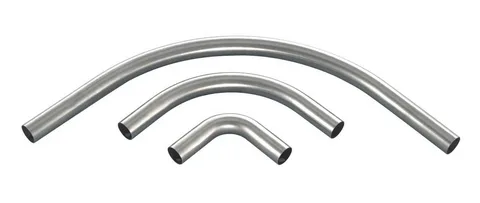Introduction:
Stainless steel long-radius bends play a crucial role in various industries where fluid flow efficiency is paramount. From food and beverage processing to chemical manufacturing and beyond, optimizing flow patterns is essential for maximizing productivity and minimizing energy consumption. In this blog, we’ll delve into the significance of stainless steel long-radius bends in enhancing flow patterns and explore strategies for optimization.
Understanding Stainless Steel Long Radius Bends:
Stainless steel long-radius bends are curved pipe fittings designed to redirect fluid flow smoothly around corners with minimal resistance. Unlike short radius bends, which cause turbulence and pressure drop, long radius bends offer a more gradual change in direction, resulting in improved flow characteristics. These bends are typically made from high-quality stainless steel, known for its corrosion resistance, durability, and hygienic properties, making it suitable for various applications, including those in sanitary environments.
Importance of Optimizing Flow Patterns:
Efficient flow patterns are critical for maintaining process integrity, reducing energy consumption, and prolonging equipment lifespan. Poorly optimized flow patterns can lead to pressure drop, increased pumping costs, uneven distribution of fluids, and potential damage to equipment. By leveraging stainless steel long radius bends effectively, engineers and operators can achieve smoother flow transitions, minimize turbulence, and enhance overall system performance.
Strategies for Optimization:
Proper Sizing:
Selecting the appropriate diameter and bend radius is essential for optimizing flow patterns. Oversized or undersized bends can disrupt flow dynamics and compromise efficiency. Calculating the Reynolds number and considering the specific requirements of the application can aid in determining the optimal size.
Smooth Surface Finish:
The interior surface of stainless steel long radius bends should have a smooth finish to minimize frictional losses and prevent the accumulation of debris or contaminants. Regular inspection and maintenance to ensure surface integrity is crucial for sustained performance.
Optimal Placement:
Positioning long radius bends strategically within the piping system can promote smoother flow trajectories and reduce the risk of flow separation or eddies. Avoiding sharp turns or abrupt changes in direction helps maintain laminar flow and minimizes energy losses.
Computational Fluid Dynamics (CFD) Analysis:
Utilizing advanced simulation tools like CFD can provide valuable insights into flow behavior and aid in the design optimization process. By modeling fluid flow through the system, engineers can identify potential bottlenecks, turbulence zones, and areas for improvement.
Material Selection:
Choosing the right grade of stainless steel for long-radius bends is crucial, especially in industries with stringent hygiene and corrosion resistance requirements. Factors such as temperature, pressure, and chemical compatibility should be considered when selecting the appropriate material.
Case Study:
Optimizing Flow in a Beverage Production Facility To illustrate the practical application of optimizing flow patterns with stainless steel long-radius bends, let’s consider a case study involving a beverage production facility. By replacing conventional short-radius bends with long-radius bends made from high-quality stainless steel, the facility was able to reduce pressure drop, minimize product waste, and improve overall system efficiency. Through careful analysis and optimization of flow patterns, the facility achieved significant cost savings and enhanced product quality.
Conclusion:
Stainless steel long-radius bends play a vital role in optimizing flow patterns and ensuring the efficient operation of fluid handling systems across various industries. By implementing strategies such as proper sizing, smooth surface finishes, optimal placement, advanced simulation techniques, and material selection, engineers can maximize flow efficiency and minimize energy consumption. Investing in high-quality stainless steel long-radius bends is not only a prudent choice for performance optimization but also a long-term investment in system reliability and productivity.





